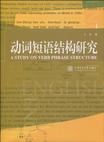动词短语结构研究
2010-1-1
上海交通大学出版社
王奇
177
《动词短语结构研究》是笔者在博士论文的基础上修改、扩充而成的,其内容是在生成语法的框架内探讨动词短语的结构。关于动词短语的结构,出现了不少理论。笔者依照Hale和Keyser以及其他许多学者(主要是持“分布式形态学”观点的生成语法学家)的理论精神,把动词分解成小的基本成分。这样,有助我们能够解释动词表现的跨语言差别。 Hale和Keyser认为词与句子的构成方式是一致的;这个思路被Mateu和McIntyre所继承,他们的理论是本书的研究基础。Mateu认为在加泰罗尼亚语(一种印欧语系拉丁语族语言)中,定点的方向成分并合进了动词,就不可能有其他再并合进动词。由于英语和加泰罗尼亚语在复杂谓语中都没有汉语式的词根复合现象,笔者认为Mateu的观点从描写的角度来说是正确的,至少对英语和加泰罗尼亚语及其他罗曼语来说是这样的。Snyder认为,一种语言只有允许能产性词语复合,才可能有复杂谓语(包括复杂结果式谓语)。然而,虽然他认为英语有能产性的复杂谓语,他承认英语的复杂谓语的两部分是不连续的,于是他推测这两部分在逻辑式部分会成为一个复合词。McIntyre注意到了Snyder。的发现,接受了他的基本思想,但对他的(动词成分与结果成分间的)“复合”进行了改造,认为复合是发生在并入的词根和本来没有音系内容的空动词之间。如果仔细考察汉语的相关语料,会发现情况更为复杂。汉语在允许定点成分的能产性并合方面与其说像英语,不如说更像加泰罗尼亚语;然而汉语也有像英语的地方:允许词根并入表致使的轻动词。Mateu的分析在处理汉语的运动方式句式时,就遇到了麻烦:在这类句子中,方式和运动一路径成分都显性出现,构成一个复合词,而按Mateu的分析,方式和路径中只能有一个与轻动词并合,不能两个都与之并合;McIntyre的理论对这样的汉语语料也没有解释力。
《动词短语结构研究》在生成语法的框架内探讨动词短语的结构。全书共分五章:第一章是导论,主要介绍理论背景;第二章是有关并合(conflation)和复合(conpounding)的文献综述;第三章围绕并合和复合探讨跨语言的较简单的动词短语结构;第四章分析较复杂的动词短语结构;第五章是结束语。《动词短语结构研究》试图在以下几方面抛砖引玉:引进“分布式形态学”等西方生成语言学新理论,分析包括汉语的跨语言语料,对汉语的一些“特殊”语法现象作出非特殊解释;立足汉语语料,对国外新理论进行补充和完善;引起国内语言学界对乔姆基学派内部非乔式本人的理论的重视。 《动词短语结构研究》适合语言研究者、高校语言文学类专业师生以及语言爱好者等对语言学感兴趣的读者阅读。
1 Introduction1.1 Theoretical Background1.1.1 Argument Structure: An Overview1.1.2 A Brief Introduction to Distributed Morphology1.2 A Presentation of This Books Theoretical Ideas1.3 Structure of This Book2 Conflation and Compounding: An Overview2.1 Conflation2.1.1 Conflation in Talmys Lexicalization Theory2.1.2 Conflation in Hale and Keysers Theory2.1.3 Conflation in Mateus Theory2.1.4 Conflation in McIntyres Theory2.1.5 Summary of This Section2.2 Compounding2.2.1 Languages Allowing or Banning Root Serialization in Verbs2.2.2 Previous Analyses of Root Serialization in Verbs2.3 Conflation and Compounding in the Formation of a New Theory3 The Interaction between Conflation and Compounding3.1 A Close Look at Root Compounding in Verbs3.1.1 Overt Root Serialization3.1.2 Overt/Covert Root Compounding in Verbs3.1.3 Root Serialization and Root Compounding3.1.4 Chinese Compound Verbs3.1.5 Summary of This Section3.2 A Closer Look at Conflation3.2.1 Motion Sentences3.2.2 Deadjectival Verbs in English and Modern Chinese3.2.3 The Nature of Conflation and Compounding3.3 Causer and the Direct Object Restriction3.4 Interpretation of Compound Verbs in Chinese Causatives3.5 The Absence of Post-verb Prepositions in Modern Chinese3.6 Summary of This Chapter4 Conflation, Compounding, and Sentences with Complex Verb Phrases4.1 The Double Object Construction4.1.1 Properties of the Double Object Construction4.1.2 Harleys Analysis of the Double Object Construction4.1.3 Advantages of Harleys Analysis4.1.4 Pylkkainen/Cuervos Analysis of the DOC4.1.5 Double Object Sentences in Modern Chinese4.1.6 A New Approach4.1.7 Summary of This Section4.2 Non-core Arguments in Causative and Inchoative Sentences4.2.1 Extra Arguments in Causatives and Inchoatives4.2.2 Previous Analyses of Sentences with Non-core Arguments4.2.3 Problems with These Views4.2.4 PSPO Sentences in Other Languages4.2.5 The Structure of Sentences with Extra Arguments4.2.6 Summary of This Section4.3 Location and Locatum Sentences in English and Chinese4.4 Conclusion5 Concluding RemarksBibliography后记
(7) Proto-Patient a. undergoes change of state b. incremental theme c. causally affected by another participant d. stationary relative to movement of another participant (e. does not exist independently of the event, or not at all) Given this list, an argument can function as the subject or object of a sentence according to how many Proto-Agent and Proto-Patient properties they have. All the properties are equal in position all that is important is the number of each of the properties an argument have. In this system, there are only two proto-roles, each having at most five properties. Although Dow tys approach solves the second problem posed by Fill more an analyses, i.e. greatly reduced the number of (proto-)roles to two, it still cannot solve the psych-verb problem in a satisfactory way. Besides, there are more challenging question about this theory that need answering. Why are these properties chosen instead of others? What are the criteria of property classification? We thus seem to have come to the conclusion that, if arguments are projected into positions of sentences according to their semantics, thematic roles are not the relevant primitives of argument structure theory. Other approaches have to be tried. 1.1.1.2 Aspect and Event Structure Having seen the drawbacks of using thematic roles as the basis for argument structure, we now have a brief look at another trend of investigation into the syntax-semantics-lexicon interface. Aspectual (Aktionsart) properties of the event denoted by predicates (or verbs) are proposed as playing a central part in determining the behavior of predicates (verbs) in the sentence (Jackendoff, 1990, Grimshaw, 1990, Tenny, 1994, Levin and Rappaport Hovav, 1995, Pusteiovsky.
